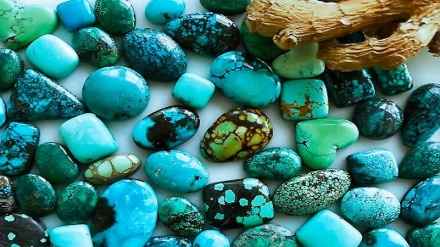Iranian Market (36)
Welcome to another episode of this series. Today, we’re going to discuss Iran’s pomegranate which enjoys a really high quality in the world.
Currently, the Islamic Republic of Iran with more than sixty thousand hectares of land under cultivation of pomegranate as well as producing nearly one million tons of this fruit per year is known as the top producer and exporter of pomegranate in the world. Pomegranate, as a garden fruit, is as old as four thousand years. Most researchers and botanists believe that the pomegranate tree is native to Iran. They say this tree was then transferred to India, to North Africa, China, Europe and the US.
The vast dispersion of wild pomegranates in some regions of Iran including the coastal regions of the Caspian Sea, the provinces of Lorestan, Kordestan, Charmahal-Bakhtiari, Fars, Sistan-Baluchistan and the southern slopes of Alborz mountains as well as the eastern and western valleys of Manjil and Loshan in Gilan Province are the proof to this claim. In the last heavenly scripture, the noble Quran, the word pomegranate has been mentioned several times.
In ayah 99 of surah Anaam of the Quran, God has mentioned that the creation of heavens, the rainfall, and the growth of plants and orchards including pomegranate are the signs of the greatness of God. God says in ayah 68 of surah Al- Rahmaan that pomegranate among the fruits that are available for the faithful in paradise.
Furthermore, in ayah 141 of surah Anaam, God advises his creatures to eat pomegranate.
The pomegranate with the scientific name of Punica granatum is a fruit-bearing shrub that grows as high as 5-10 meters.
The fruit is typically in season in the Northern hemisphere from September to February and in the Southern hemisphere from March to May. The pomegranate tree can tolerate high temperature with dry winds and also cold up to minus 10 degrees centigrade, so this fruit can be cultivated in many regions in the world. The pomegranate leaves often grow opposite each other, they are glossy, narrow and oblong. The flowers are bright red and 3 cm in diameter, with three to seven petals. The number of seeds in a pomegranate can vary from 200 to about 1,400. The pomegranate is known as the miracle of natural foods because of the astounding shape of the fruit.
As we said this fruit originated in Iran and then spread to northern India and was later introduced to China, Spain and the US state of California by Spanish settlers.
Pomegranate is basically sour and sweet. It can also be completely sweet or sour. Its color and size can also vary. However, different species of pomegranate have almost the same nutritional properties. The well-known great Iranian genius, Abu Ali Sina, believed that the best pomegranate is the sweet one. He also believed that every part of pomegranate has medicinal effects.
Researchers have shown that this fruit has many nutritional benefits and can prevent many diseases. This fruit is used in pharmaceutical industry.
Physicians are of the opinion that pomegranate is the elixir of life because of its vast nutritional benefits. This fruit contains vast amounts of vitamins B1, B2, and C, and minerals like iron, magnesium, potassium, phosphorus and sodium. Pomegranate refines the blood and prevents diabetes. Pomegranate also cures diseases like asthma, severe cough, and other respiratory diseases. This fruit is also recommended to those who suffer from heart diseases. In the Iranian traditional and herbal medicine, this fruit is recommended for the better activity of kidneys.
This fruit fights urea, high blood pressure, prostate cancer, Alzheimer’s disease, aging and obesity.
Thanks to its fibre, pomegranate is suitable for digestive system and therefore prevents colon cancer as it helps coming out of the waste. Pomegranate juice contains higher levels of antioxidants than most other fruit juices. The antioxidants in pomegranate juice can help remove free radicals, protect cells from decay, and reduce inflammation. Pomegranate also prevents depression and stress and using it makes you happy.
The color of pomegranate peel cannot be easily cleaned so in the past it was used for dying strings and clothes. Today this fruit is used for making traditional paints.
Pomegranate is also used in making paste, syrup, jam, marmalade, flavors, jelly, ice-cream, and vinegar.
The pomegranate seed contains oil with powerful antioxidants.
The Islamic Republic of Iran with more than sixty thousand hectares of land under cultivation of pomegranate as well as producing nearly one million tons of this fruit is recognized as the biggest producer and exporter of pomegranate in the world.
More than 700 species of pomegranates are produced in many provinces including in Khorasan, Yazd, Isfahan, Fars and Markazi. The regions of Saveh, Neyriz, Ferdows, Kashan and Bajestan are the main regions that produce pomegranate in Iran. Saveh pomegranate enjoys a global fame because of its high quality, sweetness, thin peel, long preservation and being organic.
In comparison with other species of pomegranate in the world, Saveh pomegranate can stay fresh from 18 months to two years because it contains high amount of acid. This is while other pomegranates only stay for four months.
Iran’s pomegranate is exported to many countries including Russia, Iraq, Armenia, Germany, Switzerland, South Korea, Turkmenistan, Sweden, France, Azerbaijan and Persian Gulf states including Qatar, Kuwait, and the UAE.
AE/RM/SS


